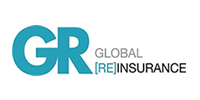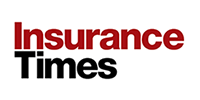With the dynamics of insurer and MGA relationships coming under the microscope at broker event, panellists additionally emphasise that ‘MGAs only exist on third party capital’, so ‘cannot afford to run business with brokers [that] aren’t delivering’
Mainstream carriers that focus on insuring “high volume, standard risks, where underwriting specialty makes relatively little difference” are increasingly trying to “push out” into more niche underwriting fields, posing “a threat to the MGA model”.

This observation is according to MGA experts that addressed around 30 UK general insurance broker leaders at Insurance Times’ exclusive Broker CEO Forum retreat, held on 13 November 2025 at Winchester’s Lainston House.
During a 30-minute panel debate entitled ‘Opportunities with the MGA market’, one panellist spoke about the relationship between MGAs and insurers after comments made earlier in the conference suggested that composite carriers were undergoing a “mindset” shift to prefer supplying capacity to MGAs rather than providing it directly.
This view was first discussed in a separate session entitled ‘What makes a good insurance broker?’.
A broker panellist featuring in this conversation told delegates: “When we speak to insurers now about MGAs or capacity, they seem much more favourable to the idea [and] actually [prefer to] provide capacity than to deliver it themselves.
“They [have] almost accepted that [they are] not necessarily the best at delivering some of these solutions. There are people out there that do better, so we’ll accept that and we’ll just provide capacity. To me, the mindset of insurers has changed over the last few years. [That is] very much the way that is going.”
The later MGA panellists, however, did not wholly agree with this view. For these speakers, it was simply important for composite carriers and MGAs to home in on the areas of the market that they could perform best in – currently, this sees insurers and MGAs operate in different verticals, therefore not directly competing.
One MGA expect did predict that this might change, however.
He said: “The composite model is fine. It’s just very clear about what it does. [MGAs] can’t go high volume, standard risk, where underwriting specialty makes relatively little difference, [unlike composite insurers].
“We can build the data sets. We can be really fleet of foot. I can build products with different capacity stacks. I can build a product very quickly to take it to market. That’s hard if you’re running a balance sheet in a composite. That’s why I choose to go [into certain] spaces [as an MGA].
“And actually, what we’re seeing is increasingly [composites] may start to try and push out on the edges again [in terms of specialist products] and that’s a threat to the MGA model – not the other way around.
“But where I wouldn’t go [as an MGA] is mainstream or digital pricing, where you’ve got no ability to add value, because we can’t do that as well as the composites. There are always things we want to improve, but we can’t go there as MGAs, not without massive amounts of investment.”
Capital crux
Despite these predictions that insurers may look to step on MGAs’ toes, there is no question that the MGA market is flourishing.
Read: Ross Dingwall – Mission’s new chief executive on ‘turbocharging growth’
Read: Revealed – Brokers confirm which MGAs are raising the bar in Insurance Times’ annual report
Explore more MGA related articles here, or discover more news analysis here
Figures from the Managing General Agents’ Association (MGAA), for example, state that as of November 2025, the trade association has 270 MGA members in the UK that underwrites £18.5bn of premium income across more than 300 different product lines.
The MGAA additionally confirmed this month that its MGA membership has grown by 60% over the last five years and that it has 70 insurer partners that wish to deploy capacity to MGA members.
A Broker CEO Forum panellist noted: “The MGA market is not what it was maybe five, six even 10 years ago – a flash in the pan. It is clearly part of the whole fabric [of UKGI].”
However, the session’s MGA speakers agreed that capital was king for MGAs, meaning that their business model is much “more existential” than composite carriers. This puts increased emphasis on the partnerships that MGAs engage with because they cannot afford to take a misstep – or they risk capacity pulling out.
“You are working with capacity that has lots of choices, that can leave next year if you get it wrong. It’s much more existential than your large composites,” one panellist confirmed.
“I need to see quote rates at 50% plus and I need to see strike rates at about 50% plus because otherwise it’s just not efficient. We have to be really quite direct and upfront with our distribution partners.
“If we’re going to work with you, we need to be sure. We’re going to [need to] see a flow of enquiries. We need to be really clear with them about the appetite that we have.”
Another panellist added: “MGAs only exist on third party capital, so you cannot afford to run business with brokers [that] aren’t delivering.
“[This dynamic] allows [MGAs] and [to] talk around how they understand in a real, deep way brokers’ portfolios and how they can meet the needs of that portfolio. If you start off on that and then you’ve got the granular management information, loss ratio performance, strike rate performance – all those things bring together a much stronger partnership.”
‘Secret sauce’ of success
Strong partnerships between brokers and MGAs have helped to facilitate the sector’s growth.
For example, capacity providers have demanded “more access to the UK market” and one panellist confirmed that MGAs are “providing distribution” here, taking advantage of this growth opportunity. This is particularly true in London.
Read: Paul Dilley – Bridgehaven has not yet ‘scratched the surface’ of its growth ambitions
Read: Open dialogue between insurers, brokers and MGAs key to client success
Explore more MGA related articles here, or discover more news analysis here
An MGA speaker said: “There’s lots of very successful and very big composite providers in the UK regions. They’re very, very good at what they do. They provide us with capacity. But there’s an awful lot of capacity that comes into the London market that’s also looking for access to that same distribution – and MGAs can provide that. That’s really important.”
Another area where MGAs are winning, according to Broker CEO Forum panellists, is when issuing quotes to brokers.
One panellist, who has worked on both the insurer and MGA side, explained that the internal inefficiencies in big composites when it comes to issuing broker quotes is a huge challenge, with teams trying to cross reference logged details across numerous offices to ensure that different regional teams are not competing on the same quote, or are providing the same price.
“That level of distribution is really expensive and really inefficient, especially if 70% of what comes in the door you’re going to say no to, so you have an inbuilt inefficiency and delay,” he explained.
“As an MGA, we don’t have to do that. We put one quote to the broker that we think is the most likely to win – that’s so much more efficient. That makes a big difference, as well as the fact [MGAs typically have] new, modern platforms and [are] not operating off legacy platforms.”
The MGA panellists could reel off many factors that they felt contributed to MGAs’ “secret sauce” of success, including easy access to decision-makers, underwriting specialism and expertise, clean information technology stacks, “forensic understanding” of distribution and ensuring to sit on the “fringes” of mainstream offerings.
“We’re trying to get into those parts of the market where service and access to an expert who is a decision-maker across property and casualty makes a difference,” one panellist explained.
“We’re helping people reach parts of the market [that are more difficult to access] – being really clear about that, [that it is a] harder [task] to do. So, being specific and then being really frank about distribution, about not trying to service everybody, all the time.”

Since joining Insurance Times, Katie has successfully obtained a number of industry accolades. Most recently, at Biba's 2025 Journalist and Media Awards, Katie was named the overall winner and received the Journalist of the Year trophy, alongside the Best Thought Leadership Award for her briefing article on reproductive health MGA Juniper and how insurance can be used to positively impact taboo subjects.View full Profile
























































No comments yet